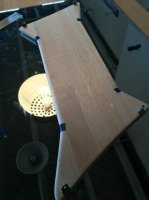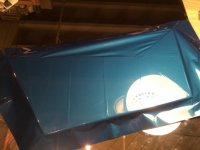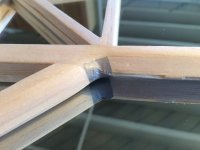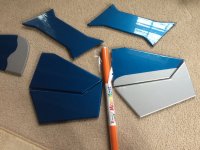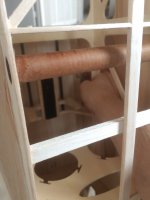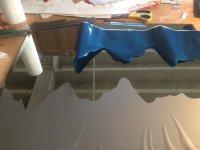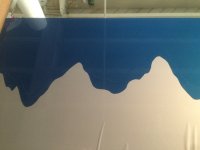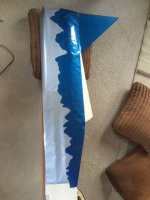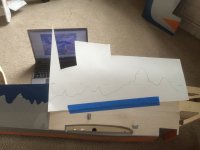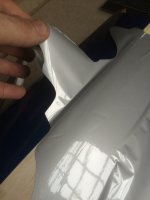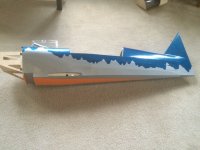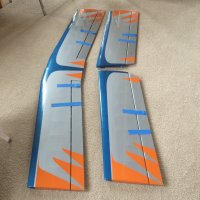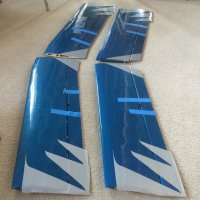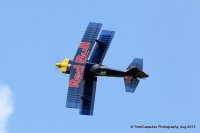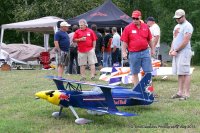ThePledge
50cc
The covering continues. It goes really smoothly once I figured out what the covering will do and what it won't.
Any concave "angles" are tough. They may be possible with enough heat/stretching, but I just cheated and pre-placed little patches so I could cut the excess overhang into easily foldable sections. The patches are necessary because unlike the convex "angles" which leave overlap, the concave "angles" leave a gap.
Going around the round edges just took some heat. I've learned to stretch the covering and slowly fold it over around the curve while applying heat to the portion of the covering which is about to be stuck down. In other words, stay ahead of the curve ironing out the wrinkles before covering hits the surface.
Made a skin for the tops of the stabs just like the rudder. Works perfect, just need to take care with heat over the seam when shrinking over the open bays or these tiny, melty bubbles will appear.
On the tail feathers I used this sequence:
Tack the edges at 250F keeping things as tight as possible.
Shrink over the open bays with the iron turning the heat up a little at a time.
Cut lines so the covering can be folded around corners.
Pull the covering around the round edges.
Still have a bunch of trim work to do with the orange!
Any concave "angles" are tough. They may be possible with enough heat/stretching, but I just cheated and pre-placed little patches so I could cut the excess overhang into easily foldable sections. The patches are necessary because unlike the convex "angles" which leave overlap, the concave "angles" leave a gap.
Going around the round edges just took some heat. I've learned to stretch the covering and slowly fold it over around the curve while applying heat to the portion of the covering which is about to be stuck down. In other words, stay ahead of the curve ironing out the wrinkles before covering hits the surface.
Made a skin for the tops of the stabs just like the rudder. Works perfect, just need to take care with heat over the seam when shrinking over the open bays or these tiny, melty bubbles will appear.
On the tail feathers I used this sequence:
Tack the edges at 250F keeping things as tight as possible.
Shrink over the open bays with the iron turning the heat up a little at a time.
Cut lines so the covering can be folded around corners.
Pull the covering around the round edges.
Still have a bunch of trim work to do with the orange!

